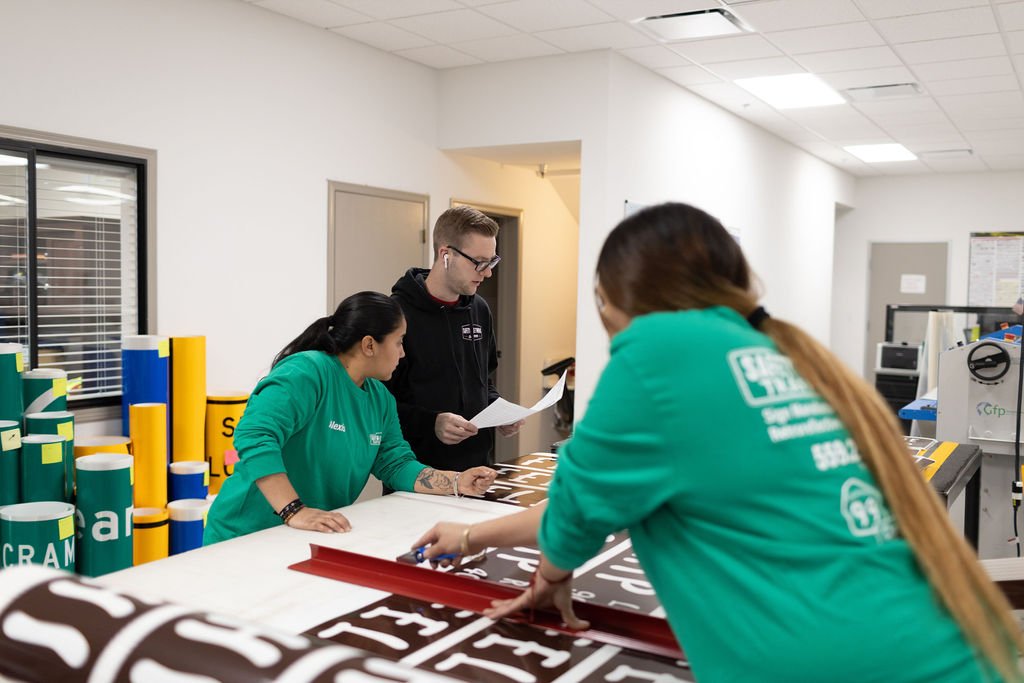Effective work zone management is critical to ensuring safety, efficiency, and compliance in construction and maintenance projects. At Safety Network Inc., we recognize that well-trained teams are the foundation of successful work zone operations. From traffic control to hazard mitigation, proper training equips your team to handle the complexities of work zones, protecting workers, motorists, and pedestrians. This comprehensive guide outlines how to train your team for effective work zone management, ensuring safety and operational success while adhering to industry standards.

Key Training Strategies for Work Zone Management
Work zones are dynamic environments with unique risks, including moving traffic, heavy equipment, and changing conditions. According to the Federal Highway Administration (FHWA), work zone crashes result in over 100,000 injuries annually in the U.S., underscoring the need for robust training. At Safety Network Inc., we specialize in traffic control and safety solutions, and we’ve outlined essential training strategies to prepare your team for safe and effective work zone management.
Understanding Work Zone Safety Standards
A strong foundation in safety regulations ensures your team operates within legal and industry guidelines.
Familiarize with Federal and State Regulations
Train your team on FHWA guidelines, such as the Manual on Uniform Traffic Control Devices (MUTCD), which sets standards for traffic control devices and work zone setups. Review state-specific requirements, as they may vary. For example, California’s Caltrans has additional mandates for work zone signage and barriers.
Emphasize OSHA Compliance
The Occupational Safety and Health Administration (OSHA) outlines worker safety standards. Train your team on OSHA’s requirements for personal protective equipment (PPE), fall protection, and hazard communication to prevent accidents.
Review Industry Best Practices
Incorporate best practices from organizations like the American Traffic Safety Services Association (ATSSA). ATSSA’s training programs offer insights into effective traffic control plans and worker safety protocols.

Developing a Comprehensive Training Program
A structured training program ensures all team members are equipped with the necessary skills and knowledge.
Create Role-Specific Training Modules
Different roles—flaggers, equipment operators, supervisors—require tailored training. Flaggers need skills in directing traffic, while supervisors must understand traffic control plan implementation. Develop modules that address each role’s responsibilities.
Incorporate Hands-On Training
Simulate real-world work zone scenarios through field exercises. Practice setting up temporary traffic control devices, such as cones, signs, and barriers, to build confidence and competence. Hands-on training improves response times and decision-making under pressure.
Schedule Regular Refresher Courses
Work zone conditions evolve, and so should your team’s skills. Schedule annual or biannual refresher courses to review new regulations, technologies, and safety protocols. This keeps your team current and compliant.
Focusing on Traffic Control Skills
Effective traffic control is central to work zone safety, minimizing disruptions and risks.
Train on Traffic Control Plans (TCPs)
Teach your team to read and implement TCPs, which outline signage, lane closures, and detours. Ensure they understand how to adjust plans based on real-time conditions, such as weather or traffic volume.
Master Flagging Techniques
Flaggers are critical to directing traffic safely. Train them on proper signaling, positioning, and communication using flags, paddles, or lights. Emphasize visibility, requiring high-visibility PPE that meets ANSI/ISEA 107 standards.
Utilize Technology for Efficiency
Introduce your team to advanced tools like automated flagger assistance devices (AFADs) or real-time traffic monitoring systems. Training on these technologies enhances precision and reduces human error.
Prioritizing Hazard Awareness and Mitigation
Work zones are filled with potential hazards, from moving vehicles to uneven terrain.
Identify Common Hazards
Train your team to recognize risks such as speeding vehicles, distracted drivers, and equipment malfunctions. Use real-world case studies to illustrate consequences and prevention strategies.
Implement Risk Assessment Protocols
Teach workers to conduct pre-shift hazard assessments, checking for unsafe conditions like poor lighting or missing signage. Provide checklists to standardize the process and ensure thorough evaluations.
Develop Emergency Response Plans
Prepare your team for emergencies like accidents or equipment failures. Train them on first aid, evacuation procedures, and communication protocols to respond swiftly and effectively.
Enhancing Communication and Team Coordination
Clear communication is essential in fast-paced work zones where missteps can lead to accidents.
Establish Clear Communication Channels
Train your team on using two-way radios, hand signals, or mobile apps for real-time coordination. Ensure all workers understand terminology and protocols to avoid confusion.
Foster Team Collaboration
Conduct team-building exercises to improve coordination between flaggers, operators, and supervisors. Simulated work zone drills can enhance trust and streamline operations.
Train on Public Interaction
Workers often interact with motorists or pedestrians. Train your team to communicate professionally, providing clear directions and maintaining a calm demeanor under pressure.
Leveraging Technology and Training Tools
Modern technology can enhance training effectiveness and work zone safety.
Use E-Learning Platforms
Online training modules allow flexible learning, covering topics like MUTCD standards or PPE usage. Platforms like ATSSA’s online courses provide accessible, high-quality content.
Incorporate Virtual Reality (VR)
VR simulations allow workers to practice in realistic work zone scenarios without real-world risks. Use VR to train on complex setups or emergency responses.
Track Training Progress
Implement a learning management system (LMS) to monitor completion rates and assess performance. This ensures accountability and identifies areas for improvement.
Building a Safety-First Culture
A culture that prioritizes safety reinforces training and encourages accountability.
Promote Leadership Accountability
Train supervisors to model safe behaviors and enforce protocols. Their leadership sets the tone for the entire team.
Encourage Reporting and Feedback
Create a system for workers to report hazards or suggest improvements without fear of reprisal. Regular feedback loops help refine training and operations.
Recognize Safe Practices
Reward team members who demonstrate exceptional safety practices. Recognition programs boost morale and reinforce the importance of training.
How Safety Network Inc. Can Help
At Safety Network Inc., we provide expert traffic control and safety solutions to ensure your work zones are safe and efficient. Our services include customized training programs, traffic control plan development, and equipment rentals tailored to your project needs. Connect with us on LinkedIn or Facebook for the latest work zone safety insights.
Why Choose Safety Network Inc.?
With years of experience in traffic control and work zone safety, Safety Network Inc. is a trusted partner for contractors, municipalities, and transportation agencies. Our certified professionals deliver training and solutions that meet FHWA, OSHA, and state standards, ensuring your team is prepared for any work zone challenge.
Conclusion: Empower Your Team for Work Zone Success
Training your team for effective work zone management is an investment in safety, efficiency, and compliance. By focusing on regulations, hands-on skills, traffic control, hazard awareness, communication, technology, and a safety-first culture, you can equip your team to excel in challenging environments. Safety Network Inc. is here to support you with tailored training and traffic control solutions.
Visit Safety Network Inc. to learn how we can help your team master work zone management. Follow us on LinkedIn and Facebook for more safety resources.

